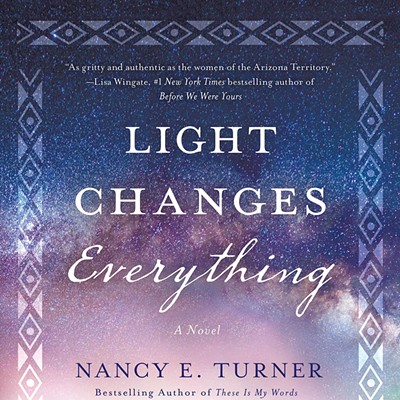Becton is the link within Morrow's short stories. A man who is of Mexican descent, but who now lives mainly in America, Becton travels back to the legendary Tarascan country of Michoacan, Mexico, in these tales, set in the 1960s. There, Becton fishes, meets with past lovers, contemplates his own life and interacts with villagers whose existence is fast becoming lost.
In the title story, Morrow articulately navigates two themes: peacefulness and danger. Becton visits the "cool mountain town" of Zacapu. His desire is to fish. Morrow reveals a stunningly vivid landscape and tangible dialogue between Becton and the locals he meets. After gaining a license to fish in certain areas, Becton watches himself catch three huge trout, the final one 20 inches long--the biggest one he has ever caught. Morrow would seem to suggest, through Becton's peaceful, and even easy, conquest, that all is well, and that all will continue to be well.
Instead, we hear the boatman who brings Becton home say: "'Perhaps I might take this little fish home, too. I've been having stomach problems and a good fish will put my system to rights.' He smiled at Becton and all that gold gleamed in the sun." Here, Becton is prepared to part with the little fish, but the boatman is ironically referring to the biggest fish Becton has caught, the 20-inch trout. Before Becton finally arrives home, he ends up having to part with two of the three fish he has earned that day. His sense of joy and peace becomes denigrated by the loss that he must endure. Morrow may be making a powerful claim about Mexico in particular, and humanity more fully: The peace we sometimes find ourselves in is never completely resistant to the effects of loss. What culture--what practices and sayings--has already disappeared?
Morrow continues with this thread of peace and the underbelly of loss in "A Cathedral Half in Grey." Here, Becton is a university student, and he travels south into Mexico to meet with Annabelle, a past lover. The two meet where Annabelle lives, in a convent for Catholic nuns. They escape for daily adventures throughout the weekend, and finally, Becton understands the desire in himself to be with Annabelle. However, he is unwilling to commit to a full relationship with her--a marriage.
Morrow powerfully and precisely uses the physical landscape to demonstrate Becton's inner turmoil. As Becton and Annabelle walk one day, they come across a massive cathedral that is only half built. In a poignant line, Morrow shows us the church: "A fire burned in front of it and the smoke curled against the walls and up toward the windows that had never been." Fusing the presence of fire with the absence of the church's body (the windows), Morrow provides a picture of three things: the church itself, Becton's soul and Mexico. Indeed, Morrow's beautiful language reveals the calm that occupies all three--there is no violence, no fighting, no outright brokenness--yet the sense of loss seems to permanently embody landscape, man and country.
In the book's other stories, Morrow continues to explore the dual themes of peace and loss. He seems to suggest that we cannot have one without the other: If we are willing to enjoy the peacefulness of the sun's light, the water's coolness and the company of people, we must also be ready to face the loss of these things. And in the midst of this tenuous relationship, a question emerges: Can we prevent the permanent loss of those things we care about most--our culture, our love, our sense of self?
Like Ernest Hemingway's now-famous minimalist style (most closely connected to Hemingway's In Our Time here), Morrow's stories reveal an outright picture of man and place. They demonstrate that keen ability to explore the territory of a culture and the territory of a soul without the messy business of telling the reader that they're doing so. Indeed, Morrow's stories are like short films, showing us images and turmoil that we will remember long after we've closed the book's cover.








